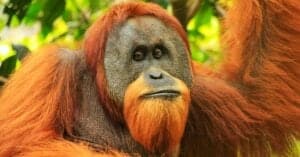Did you know that orangutans are closely related to humans? A type of great ape, the orangutan is known for its red fur, long arms, and opposable thumbs. They share more than 96% of their genes with humans and are very intelligent, even among the great apes. But these majestic creatures are also endangered.
There are three species of orangutans: the endangered Bornean orangutan, the critically endangered Sumatran orangutan, and the critically endangered Tapanuli orangutan. While closely related, they are distinct. Sumatran orangutans have longer hair on their faces and tend to stay up in the trees more than those in Borneo. They live in a small region in Sumatra, an island in Indonesia. As their name suggests, Bornean orangutans live in Borneo. Tapanuli orangutans also live in Sumatra and were only given a designation as a distinct species in 2017. Previous studies included them in the Sumatran orangutan population but further analysis showed that they were genetically distinct and they exhibit different behavior.
Why Did Orangutans Become Endangered?
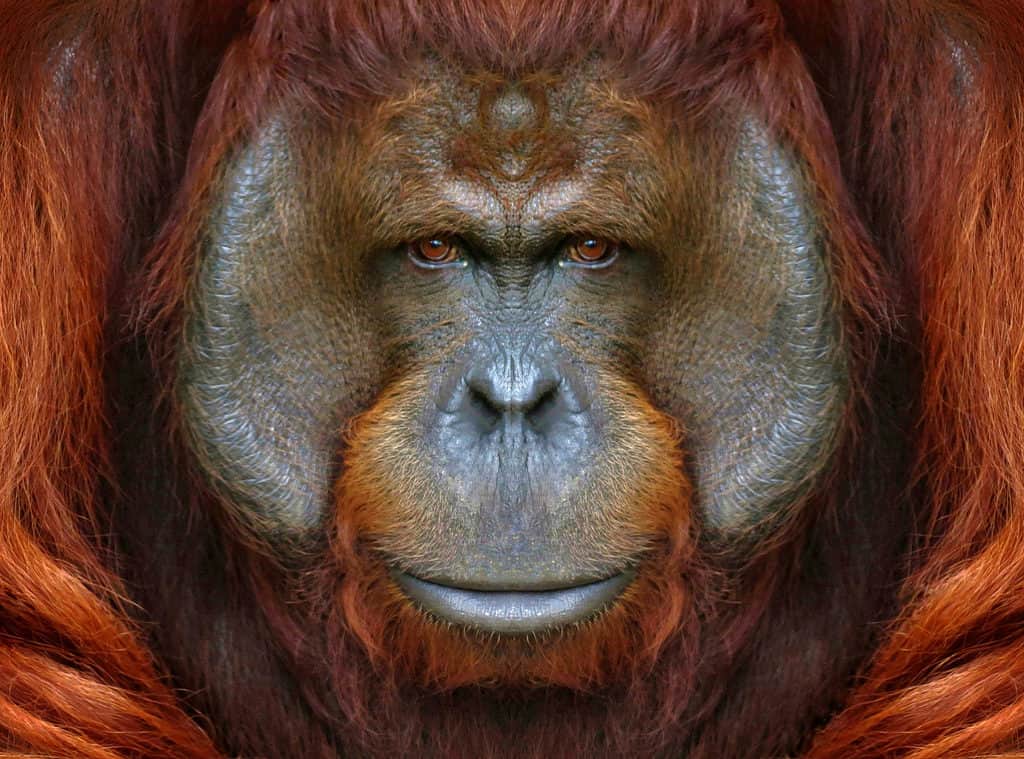
Orangutans are exceptionally adept at manipulating their environments through the use of tools.
©arul_nkh/Shutterstock.com
Habitat loss is the primary cause of the declining orangutan population. In the wild, these animals live on their own in lowland forests. They nest in trees to sleep and can swing from branch to branch. They tend to live on their own, although babies stay with their mothers until around age 6 or 7. Mothers teach their young how to build their nests, get food, and survive before the juvenile orangutans are ready to head out on their own.
Another reason that these great apes have a hard time maintaining a large population is their low reproductive rate. Mothers have one baby every 3 to 5 years. This means that it can take generations to see any difference even with increased awareness and conservation efforts. When orangutan populations decline, it is very hard for their numbers to increase.
Hunting, while illegal, is also a threat to orangutans. They do not move very fast and their fur makes them easy to spot in some cases. Sometimes, these animals are hunted for food but most of the cases are to remove orangutans that get into crops or other areas. Unfortunately, as agricultural production removes the ape’s natural food sources, they are more likely to look for food in other places, which puts them at odds with hunters. Illegal trafficking also happens, especially of orangutan babies. If captured, often after killing the mother, these babies are illegally sold as pets in some parts of Asia.
What Do Orangutans Eat?
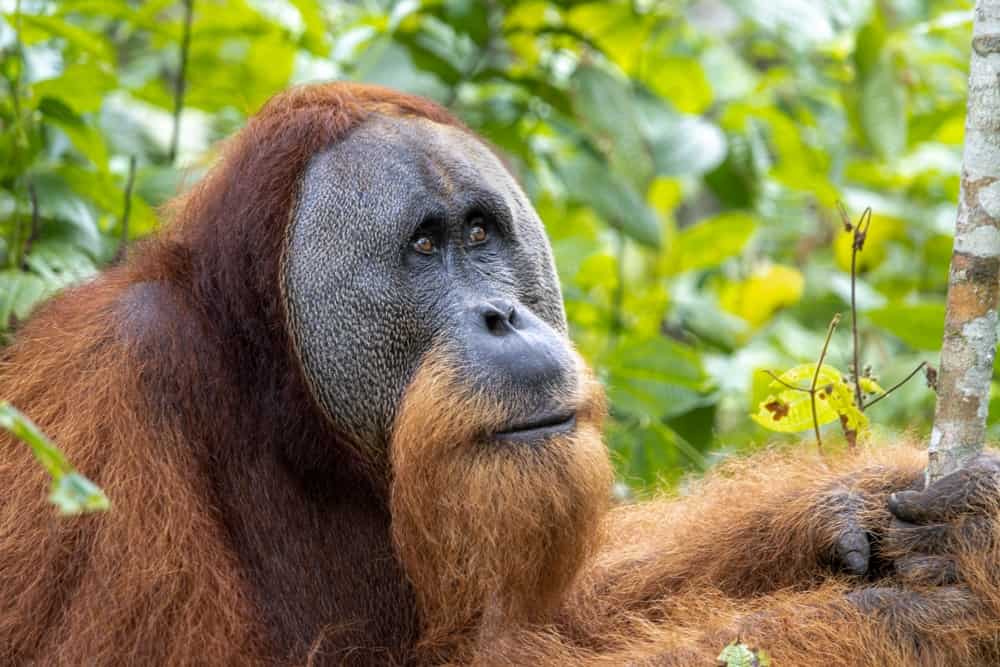
Orangutans eat mostly fruit, especially lychee, mangoes, mangosteens, and figs.
©Wirestock Creators/Shutterstock.com
These great apes are omnivores but tend to eat more plants than anything else. Fruit is their favorite and they are known to feast on lychee, mangoes, figs, and mangosteens. They also eat leaves, bark, and other parts of plants, as well as insects and eggs. As their habitat decreases so does their food supply. They have to venture to areas populated by humans, especially agricultural developments, in search of food. Unfortunately for these animals, these encounters often result in the ape being killed to protect the crops.
How Many Orangutans Are Left in the Wild?
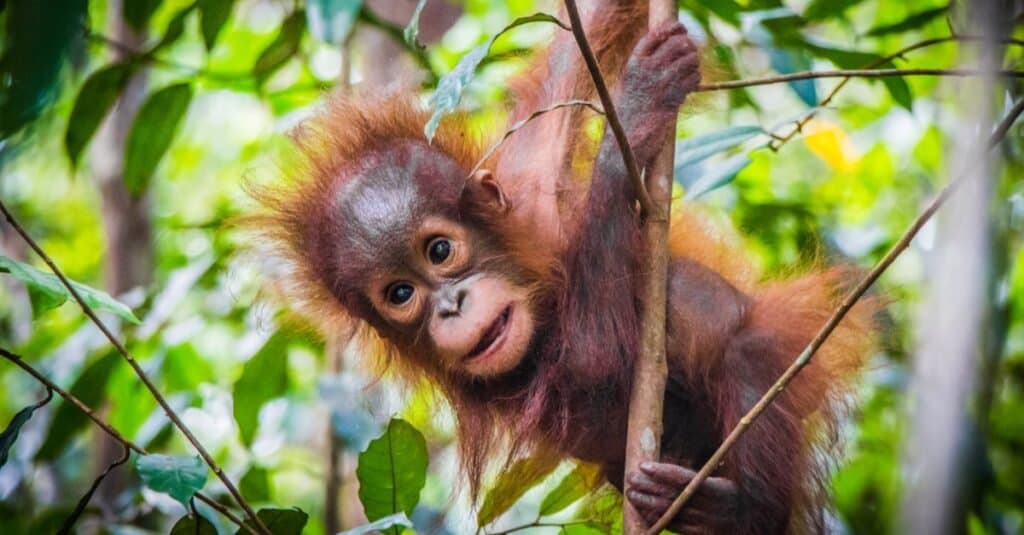
Habitat loss is one of the leading causes of the declining orangutan population.
©Alex East/Shutterstock.com
There were once as many as 250,000 of these amazing animals living in the wild in both Sumatra and Borneo. However, the loss of available habitat wreaked havoc on the populations. Today, only around 104,700 Bornean orangutans are left. They are considered endangered. The Sumatran orangutan is in even more trouble. They number around 7,500 and are limited to a very small section of Sumatra. This species is considered critically endangered. Tapanuli orangutans are the smallest population, with only 800 animals remaining in the wild. They live in the Northern part of Sumatra.
Conservation Efforts
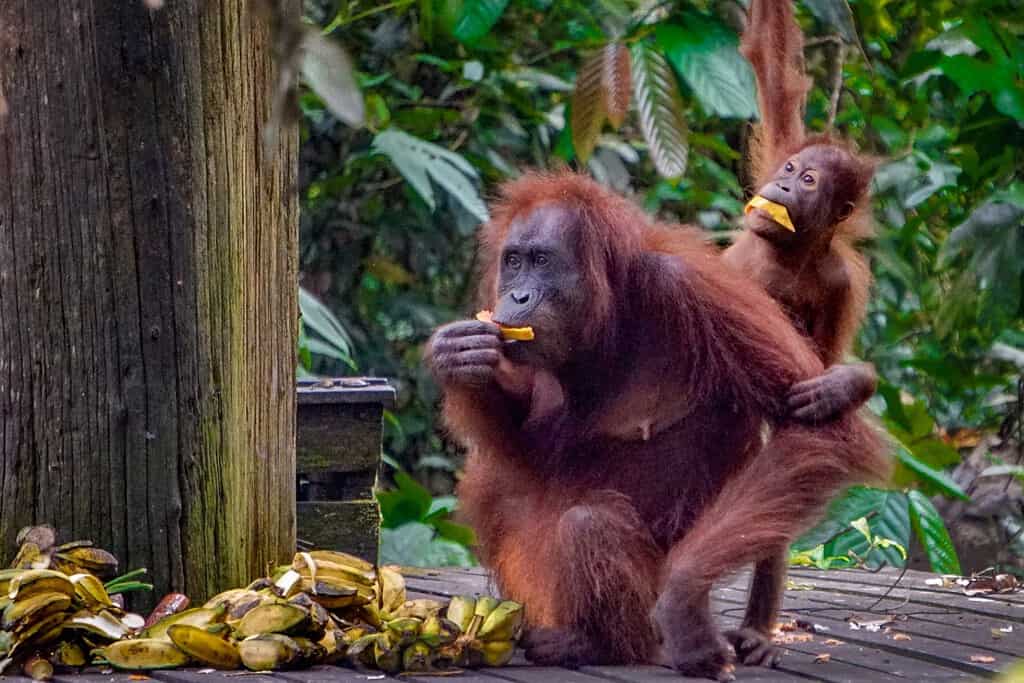
The Sepilok Orangutan Rehabilitation Centre near Sandakan in East Sabah, Malaysian Borneo works to help vulnerable orangutans survive and increase the population in the wild.
©Kylie Nicholson/Shutterstock.com
Some of the most important conservation work to protect the critically endangered orangutan focuses on their natural habitat. The World Wildlife Fund manages protected areas to provide a safe habitat for the existing populations. They also work to broaden their habitats and allow sub-groups to connect and reproduce.
Some organizations, such as the Sepilok Orangutan Rehabilitation Centre in Borneo, rescue and rehabilitate orphans. These babies may have lost their mothers due to habitat loss, hunting or poaching, or other actions, intentional or unintentional. Once rescued and rehabilitated, they are released back into the wild if experts believe they can survive.
The photo featured at the top of this post is © Katesalin Pagkaihang/Shutterstock.com
Thank you for reading! Have some feedback for us? Contact the AZ Animals editorial team.




